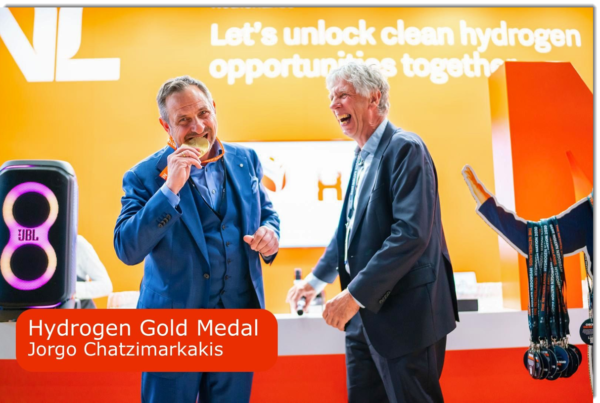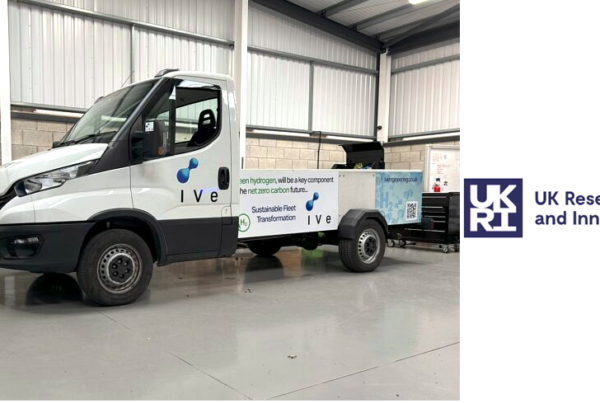
Senators: “Hydrogen production is an energy-intensive process that, if left without proper guidelines, could result in a net increase in greenhouse gas emissions.”?
Washington, D.C. – Oregon’s U.S. Senator Jeff Merkley led Senators Edward J. Markey (D-MA), Bernie Sanders (I-VT), and Elizabeth Warren (D-MA) in sending a letter to Secretary of Energy Jennifer Granholm urging the Department of Energy (DOE) to enact guardrails to ensure that the billions of dollars of investments from the Inflation Reduction Act (IRA) and the Infrastructure Investment and Jobs Act (IIJA) will be used to promote truly low-carbon hydrogen energy options that are climate safe.
“In order for hydrogen to benefit the climate, it must be produced from electrolyzers powered by clean, renewable energy, and that renewable energy must be additive to the clean energy transition already underway,” the Senators wrote to Secretary Granholm. “Perhaps as important as the production method, however, is the end use of the hydrogen. Hydrogen could be an important solution for hard to decarbonize sectors, like heavy industry and aviation, but if federal subsidies instead divert it to uses where cleaner and more efficient alternatives already exist, like light-duty cars and trucks or home heating, then the hydrogen economy will actually take us in the wrong direction.”
In the Senators’ letter to Secretary Granholm, the Senators stress the importance of hydrogen hubs meeting the Clean Hydrogen Production Standard (CHPS), which sets an initial target for lifecycle greenhouse gas emissions of hydrogen production. Draft guidance from the DOE states the Department can select projects under the Regional Clean Hydrogen Hubs Program and the Clean Hydrogen Research and Development Program that do not meet the CHPS so long as it is determined that the projects “demonstrably aid the achievement” of the CHPS. The Senators’ letter notes that there “must be a robust accounting system to verify the lifecycle GHG emissions of hydrogen production and ensure that IIJA program funds are awarded to entities who are truly producing low-carbon hydrogen.” Finally, the letter pushes for more transparency in the hub project selection and awarding process and to ensure that the DOE considers applications for clean hydrogen when determining which hubs should move forward.
“We must not invest billions of dollars into fossil hydrogen infrastructure, reliance on which will prevent us from reaching our zero-carbon goals,” the letter to Secretary Granholm concludes. “We will need to shift to zero-carbon hydrogen to combat climate chaos. It would be a wasted opportunity, not to mention a waste of billions of dollars, to invest in fossil hydrogen infrastructure that will need to be obsolete in the near future.”
Full the letter can be found here and follows below:
Dear Secretary Granholm,
Taken together, the historic clean energy investments that we made last Congress in the Inflation Reduction Act (IRA) and the Infrastructure Investment and Jobs Act (IIJA) should be an important step in tackling the climate crisis. One technology poised to benefit greatly is the American hydrogen industry; however, not all hydrogen will take us in the right direction. That’s why we urge the Department of Energy (DOE) to develop guardrails that ensure that the billions of dollars of investments in hydrogen are used to promote truly low-carbon hydrogen that is used in applications where hydrogen makes sense for the climate.
In order for hydrogen to benefit the climate, it must be produced from electrolyzers powered by clean, renewable energy, and that renewable energy must be additive to the clean energy transition already underway. Perhaps as important as the production method, however, is the end use of the hydrogen. Hydrogen could be an important solution for hard to decarbonize sectors, like heavy industry and aviation, but if federal subsidies instead divert it to uses where cleaner and more efficient alternatives already exist, like light-duty cars and trucks or home heating, then the hydrogen economy will actually take us in the wrong direction. That’s why it is so important that the DOE correctly implements the recently passed hydrogen incentives.
The DOE has a major role to play in ensuring proper implementation of the IIJA and IRA hydrogen provisions. The IIJA directed the DOE to “develop an initial standard for the carbon intensity of clean hydrogen production,” called the Clean Hydrogen Production Standard (CHPS), and funds a Regional Clean Hydrogen Hub Program and a Clean Hydrogen Research and Development Program. The IRA also offers substantial tax credits for the production of qualified clean hydrogen. It is vital that the DOE gets implementation right, to set up our country for truly clean hydrogen and to meet our climate goals.
Clean Hydrogen Production Standard – CHPS
The DOE has published draft guidance on the CHPS, proposing an initial target for lifecycle greenhouse gas (GHG) emissions of 4 kilograms (kg) of carbon dioxide equivalent (CO2e) per 1 kg of hydrogen produced. This proposal is 2 kg higher than the carbon intensity level set by the IIJA in its definition of “clean hydrogen,” in an attempt to account for additional emissions from the upstream and downstream production processes. This expanded method of accounting already raises questions about the stringency of the CHPS compared to the IRA standard. We urge the DOE to be rigorous in its development of the standard, consider strengthening it further, and to reject any call to raise the CHPS higher than the currently proposed figure.
The DOE’s draft guidance says that the agency can select projects under the Regional Clean Hydrogen Hubs Program and the Clean Hydrogen Research and Development Program that do not meet the CHPS, so long as the DOE determines that the projects “demonstrably aid the achievement” of the CHPS by mitigating emissions as much as possible across the supply chain.
The IIJA requires consideration of “technological and economic feasibility” when setting the CHPS. Producers already use clean hydrogen production technology that is able to meet the proposed standard. In fact, the DOE specifically says so in its draft guidance. The DOE recognizes that the CHPS is achievable, but in its draft guidance for the Regional Clean Hydrogen Hubs Program and the Clean Hydrogen Research and Development Program, the agency introduces the self-defeating premise that it may approve projects that do not meet the CHPS. Not only is the technology for truly clean hydrogen currently available, but the IIJA funding and IRA Section 45V Tax Credits for Production of Clean Hydrogen mean that clean hydrogen projects are also economically smart choices.
We strongly urge the DOE not to approve projects under the Regional Clean Hydrogen Hubs Program, nor to approve projects under the Clean Hydrogen Research and Development Program, that are above the proposed CHPS of lifecycle greenhouse gas emissions of 4 kg of CO2e per 1 kg of hydrogen produced.
Emissions Accounting
There must be a robust accounting system to verify the lifecycle GHG emissions of hydrogen production and ensure that IIJA program funds are awarded to entities who are truly producing low-carbon hydrogen. Hydrogen production is an energy-intensive process that, if left without proper guidelines, could result in a net increase in GHG emissions. It is essential that accurate lifecycle GHG emission calculations are made in the course of implementing the IIJA and IRA hydrogen provisions. We urge the DOE to update its modeling to improve lifecycle GHG calculations and promote clean hydrogen production.
Relying on annual, even weekly, matching of renewable energy supply with electrolyzer use would result in drastic underestimates of the lifecycle GHG emissions of hydrogen production. Electrolyzers can only be truly low-carbon if they operate during the same hours as renewable energy projects. Therefore, the Greenhouse Gases, Regulated Emissions, and Energy Use in Transportation (GREET) model, used by the DOE to measure lifecycle GHG emissions, should be updated to use more granular time-matching to assess the carbon intensity of hydrogen production. Specifically, the GREET model should be updated to incorporate hourly data.
If the DOE undercounts lifecycle GHG emission estimates and does not have accurate accounting, the IIJA’s hydrogen provisions will not actually promote low-carbon hydrogen production. Correct emissions accounting is essential to ensuring hydrogen production is truly low-carbon.
Renewable Energy Sourcing with Additionality and Deliverability Requirements
Due to the large amount of electricity needed to power hydrogen production facilities, these facilities will need to use renewable energy in order to meet IIJA and IRA emission-reduction goals. Furthermore, if renewable energy inputs are drawn from the grid to power hydrogen production facilities with no requirement that those inputs are additional and dedicated for these projects, net GHG emissions are much more likely to increase than decrease. In order to produce low-carbon hydrogen, producers must source the power used to run their facilities from new renewable energy. If the DOE does not set necessary guardrails, improper sourcing of renewable energy would allow producers to claim low GHG emissions, while in reality the overall carbon intensity of the grid may rise due to both increased demand and reduced availability of clean power.
Furthermore, unbundled renewable energy credits (RECs), or RECs that are separated from delivery of the associated electricity, should not be accepted by the DOE to demonstrate clean power sourcing. Doing so would simply shift allocation of existing renewable energy sources, without taking any intentional steps to support new renewable energy deployment. This could result in increased demand for new and existing fossil fuel energy sources to meet the increased strain on the grid or replace reallocated renewable capacity. Regional Clean Hydrogen Hubs (H2Hubs) projects should be encouraged to construct new, renewable energy sources to power their facilities.
End Use
The DOE must consider the applications for clean hydrogen when determining which hubs should move forward. Certain sectors of the economy are difficult to decarbonize. Available measures such as electrification and use of renewables are not readily deployable to all sectors, and those areas have been slow to transition to low- and zero-carbon options. Those are the sectors that should be prioritized and encouraged to switch to clean hydrogen.
Hydrogen is largely used in the chemical and petrochemical sectors, including refining petroleum. Switching those sectors to truly clean hydrogen will have a significant improvement on emissions. Other industries which are ripe for decarbonization via a switch to clean hydrogen are shipping, ammonium fertilizer, aviation, and long-haul heavy-duty transport. If the DOE ignores the end-use of clean hydrogen, it will lose the opportunity to maximize emissions reductions.
Transparency
There must be increased transparency on hub selection. It is troubling that the DOE has not explained to the public the process for determining how hubs will be awarded, or announced which hubs have been invited to submit full proposals. Transparency is always the best policy, especially for projects as big as these that will have a significant impact on how a new industry will develop.
In closing, we want to emphasize that through the IIJA and the IRA, we have an opportunity to make great strides towards combating climate chaos, but we can only move forward if the DOE is careful with its guidance and implementation of hydrogen provisions.
Read the most up to date Fuel Cell and Hydrogen Industry news at FuelCellsWorks
We urge the DOE to encourage development of clean hydrogen infrastructure under the H2Hubs program. We must not invest billions of dollars into fossil hydrogen infrastructure, reliance on which will prevent us from reaching our zero-carbon goals. We will need to shift to zero-carbon hydrogen to combat climate chaos. It would be a wasted opportunity, not to mention a waste of billions of dollars, to invest in fossil hydrogen infrastructure that will need to be obsolete in the near future.





